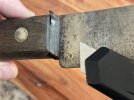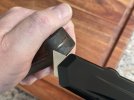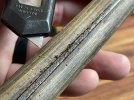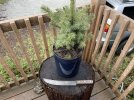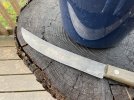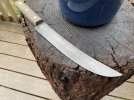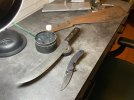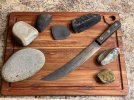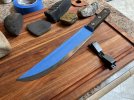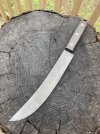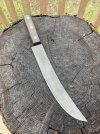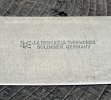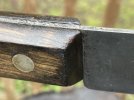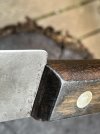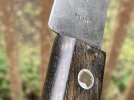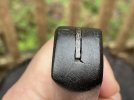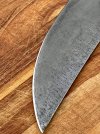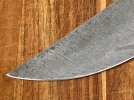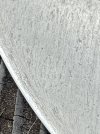- Joined
- May 29, 2004
- Messages
- 3,036
Hi Folks,
Got another knife to play with.
This belongs to the Grandmother of a friend of mine. Over Thanksgiving the subject of carving knives came up, this knife came out of a drawer, and my friend grabbed it in hopes that I could get it back in order for her Grandma.
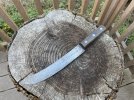
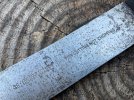
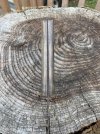
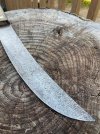
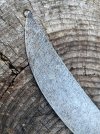
There are several things that make this knife interesting to me.
First off is the crazy striped patina on the blade. I’ve never seen anything quite like it and I would just leave it alone if this were an outdoor blade. I’m planning to use Naval Jelly to remove the rust but hopefully keep some of the patterns.
The second thing that jumped out was the stamp on the blade saying “For Cutting Not Chopping”. This leads me to believe this knife is likely at a higher hardness than most modern Henckels knives.
Along with a nice distal taper, the tang is tapered! Not something I see much in kitchen knives, and I’ve never seen it used with this type of “nested full-tang” or whatever that tang style might be called…
Lastly, while the knife has clearly been used a lot, it’s got very little wear and the edge is close to sharp as you can see in the picture below.
I’m not going to do much with this besides cleaning, oiling and sharpening, but I’ll post pics when it’s done. Can’t wait to make a few test cuts with this puppy.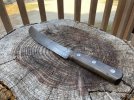
Got another knife to play with.
This belongs to the Grandmother of a friend of mine. Over Thanksgiving the subject of carving knives came up, this knife came out of a drawer, and my friend grabbed it in hopes that I could get it back in order for her Grandma.





There are several things that make this knife interesting to me.
First off is the crazy striped patina on the blade. I’ve never seen anything quite like it and I would just leave it alone if this were an outdoor blade. I’m planning to use Naval Jelly to remove the rust but hopefully keep some of the patterns.
The second thing that jumped out was the stamp on the blade saying “For Cutting Not Chopping”. This leads me to believe this knife is likely at a higher hardness than most modern Henckels knives.
Along with a nice distal taper, the tang is tapered! Not something I see much in kitchen knives, and I’ve never seen it used with this type of “nested full-tang” or whatever that tang style might be called…
Lastly, while the knife has clearly been used a lot, it’s got very little wear and the edge is close to sharp as you can see in the picture below.
I’m not going to do much with this besides cleaning, oiling and sharpening, but I’ll post pics when it’s done. Can’t wait to make a few test cuts with this puppy.

Last edited:

